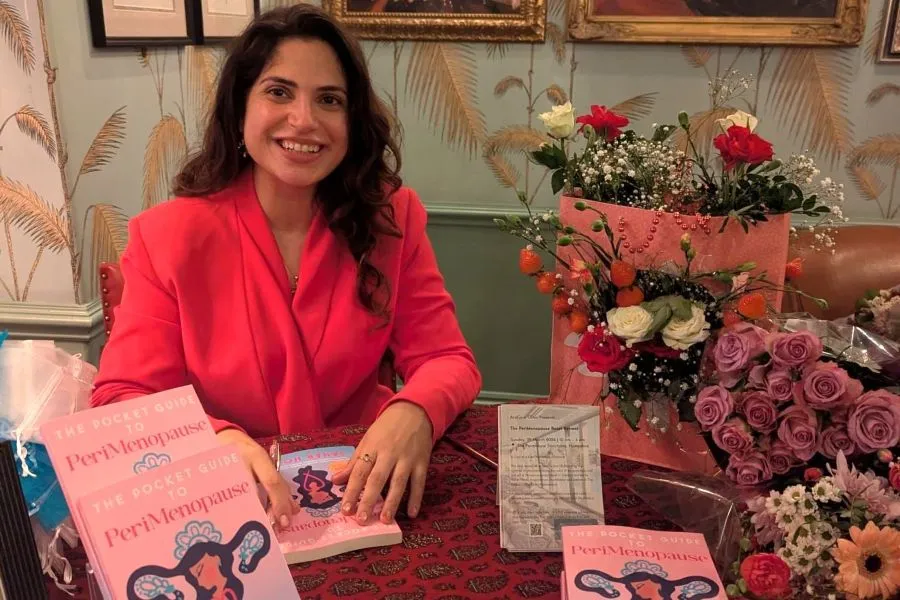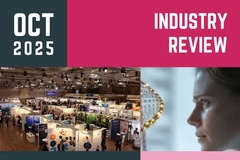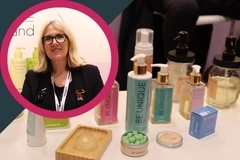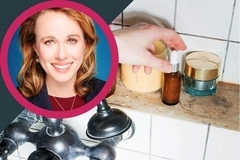Wellness expert urges personal care industry to rethink perimenopause support
Key takeaways
- The guide blends Chinese medicine, acupressure, and Persian rituals to support women through perimenopause.
- It features QR-linked tutorials that offer practical tools for acupressure, breathwork, and aromatherapy.
- Sahar Hooti advocates reframing perimenopause as a time of recalibration and self-connection rather than decline.

The Pocket Guide to PeriMenopause brings traditional Chinese medicine, acupressure, and Persian cultural practices together to alleviate the hormonal shifts of perimenopause.
Author and founder of AcuCare Clinic, Sahar Hooti, says the book “fills a gap in a conversation that has for too long been fragmented, clinical, or overlooked.” The new guide shares a toolkit that supports women through well-being practices that encompass physical, emotional, and skin health aspects.
“For too long, perimenopause has been treated as a medical afterthought, a moment women simply ‘push through.’ Through my clinical work at AcuCare Clinic in the UK and my book, I wanted to reframe it as a phase of recalibration, not decline,” Hooti tells Personal Care Insights.
She touts that The Pocket Guide to PeriMenopause is “the first” interactive, QR-linked women’s health guide, connecting the science of hormones with rituals. By scanning QR codes, women access tutorials in acupressure, breathwork, and aromatherapy.
“I believe professionals in health and personal care have a shared responsibility to start this conversation — not just in treatment rooms, but also in workplaces and well-being programs. Education, empathy, and inclusivity must replace silence,” says Hooti.
“The personal care industry can evolve by creating products and experiences that are educational, ethical, and emotionally intelligent.”
Industry collaboration
Hooti believes there is a global shift from symptom suppression to self-regulation. She says women are no longer satisfied with surface solutions but want to understand their bodies.
 Sahar Hooti introduces a new approach to perimenopause. Anxiety, poor concentration, and loss of confidence are common during perimenopause. Hooti explains that these mental symptoms are often more debilitating than the physical ones.
Sahar Hooti introduces a new approach to perimenopause. Anxiety, poor concentration, and loss of confidence are common during perimenopause. Hooti explains that these mental symptoms are often more debilitating than the physical ones.
“These emotional layers impact relationships, careers, and overall quality of life.”
“I see women from all walks of life — CEOs, teachers, nurses — all saying the same thing: ‘I don’t feel like myself anymore.’ Acupuncture, acupressure, and aromatherapy aren’t just about the body, they help women come home to themselves.”
Hooti calls for more cross-sector collaboration in the personal care industry. She says that beauty brands, health care providers, and educators need to create a culture of prevention, not crisis management.
“My Press–Pulsate–Pause Method (advanced acupressure) and AromaAcu Therapy are examples of this science-meets-sensory approach. These are practices women can use daily to calm the nervous system, regulate hormones, and reconnect with themselves.”
Innova Market Insights data indicates that women are increasingly aware of perimenopause. The market researcher says that in the skin care market, tailored skin care routines for perimenopause can help manage symptoms before they intensify in menopause.
It highlights that brands have an opportunity to innovate by developing preventive products that focus on maintaining skin health throughout this transition.
According to Dove, 43% of women over 45 in the US actively search for skin care that supports them during perimenopause and menopause. The brand recently released its first Women’s Wellness Range for perimenopausal and menopausal-related symptoms.
Cultural collaboration
Hooti is a degree-trained acupuncture practitioner, aromatherapist, educator, and women’s hormonal health and skin specialist.  QR codes link to wellness tutorials in the Pocket Guide to PeriMenopause.
QR codes link to wellness tutorials in the Pocket Guide to PeriMenopause.
Her guide combines advanced acupressure (Hooti’s Press-Pulsate-Pause Method) with healing breath rituals, aromatherapy, and affirmations. It also incorporates traditional Chinese medicine and Persian cultural insights.
“Having grown up between Iran, Australia, and England, I’ve seen how cultural silence shapes women’s experiences. In Persian culture, women once celebrated life’s transitions with shared rituals and storytelling. We’ve lost that sense of ceremony,” Hooti says.
“Through The Pocket Guide to PeriMenopause, I wanted to reintroduce that — blending ancient medical systems with modern language women can relate to.”
Hooti emphasises that normalizing perimenopause starts with inclusion. “We need male colleagues, younger generations, and health care providers all involved in the conversation.”
“[The book is] about transforming how we speak about women’s health — not as something to fix, but something to understand… [I’m] helping women, professionals, and workplaces see perimenopause not as an ending, but as an upgrade.”



















